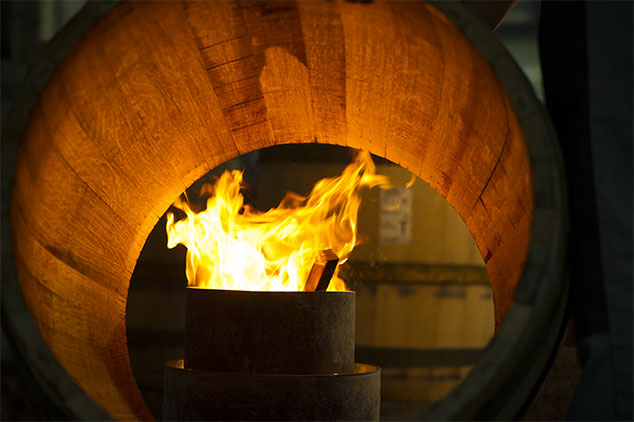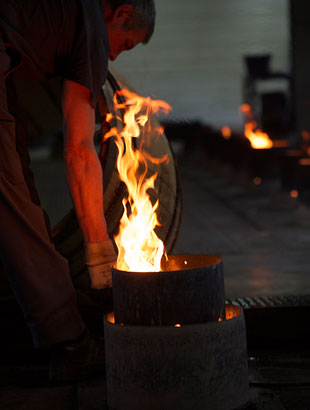The control of the toasting process is a fundamental part of the organoleptic expression of the wood.
Radoux combines the hands on, manual skills of its craftsmen, (visual control of the staves, positioning of heads, toasting...) with top quality technology guaranteeing quality, homogeneity and regularity of its barrels.
Depending on the length of the bousinage, toasting can be Light, Medium, Medium+ or Heavy. Each level of intensity gives the wood a different chemical profile, which then enhances the various aromas of toasting, spices, vanilla or coconut.


A palette of toasts
On top of the various levels of toast, Radoux Cooperage has fine-tuned specific techniques and can offer six distinct ranges: Pure, Revelation, Evolution, Classique, Heavy and Integration.
These original toasts have been studied so that depending on the grape variety, the length of aging and the selection of the wood, they bring either a discreet or more marked oak flavor and a tannic contribution which will round off or bring structure to your wines. Combined with the various levels of toast, they offer a wide range for red wines, white wines and spirits.
Tables of recommendations
We have set up a classification of eight wine profiles in order to propose the most appropriate aging methods depending on the objectives you are seeking for your wines
- Profile of concentrated, balanced red wines
- Profile of very mature red wines
- Profile of varietal red wines
- Profile of delicate red wines
- Profile of delicate varietal white wines
- Profile of mature, concentrated white wines
- Profile of liqueur wines and natural sweet wines
- Spirits
These profiles have been defined according to the wine varieties, the characteristics on the nose and palate of basic wines. Depending on the size of the container, the origin of the wood, the selection of grain and the type of toast, we recommend for each wine the intensity of aromas and structure and the optimum aging periods. Several technical strategies are suggested for these categories:
- Toasts at fairly low temperatures to obtain freshness ;
- Long or intense toasts to obtain more complex aromas and increase sweetness ;
- Medium toasts for a good balance aroma/volume ;
- Larger barrels to reduce the ratio wood/wine ;
This list is not exhaustive and can be adapted according to the style of wines required.
